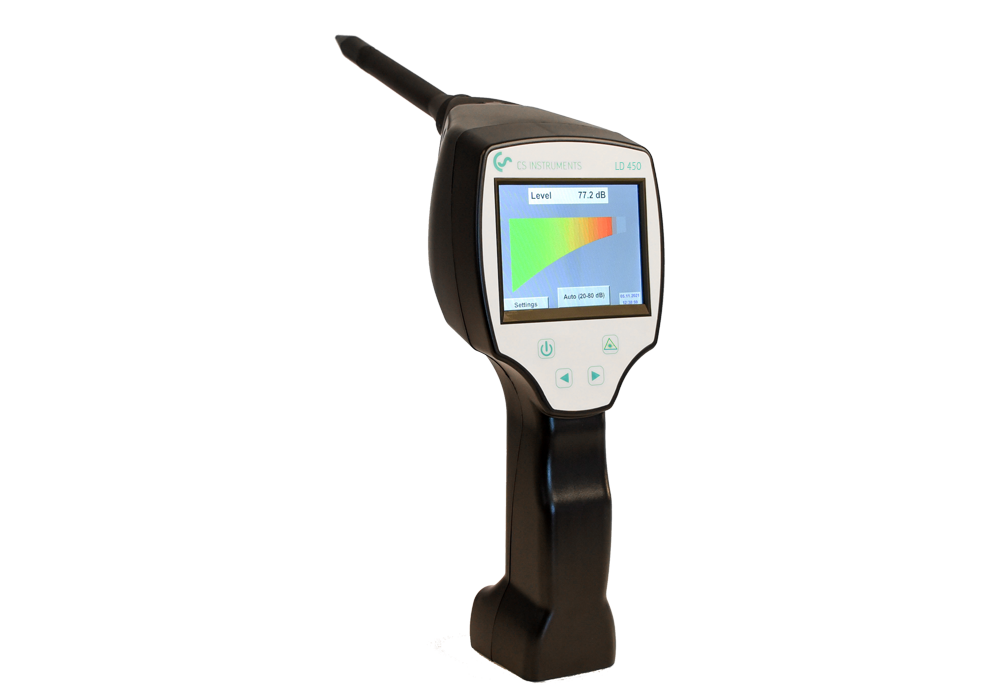Leak detector LD 450
If gases escape through leaks in pressurized pipe systems (e.g. non-tight screwed connections, corrosions and so on), ultrasonic noises are generated. By means of LD 450, even the smallest leakages which cannot be heard by the human ear and which are not visible due to their size can be detected even from distances of several meters. LD 450 transforms the inaudible signals into a frequency which can be identified by human beings. By means of the comfortable soundproof headset, these noises can be detected even in extremely noisy environments.
The LD 450 leak detector is the advancement of the proven LD 300 and LD 400 and it impresses with its significantly refined sensor technology and its improved support in the tracing of leaks. By means of the integrated laser pointer, which serves for target heading, the leak can be localised more accurately. Through the use of a specially designed acoustic trumpet, a better bundling of the sound waves is achieved. This trumpet acts like a directional microphone, which bundles ultrasonic waves and thus improves the acoustic behavior. Due to the special design of the acoustic trumpet, the use of the laser pointer is not hindered.
The LD 450 meets the requirements of class I instruments for the norm “Standard Test Method for Leaks with Ultrasound” (ASTM Int. – E1002-05)
Typical Applications:
Leak detection on
- compressed air, gas and vacuum systems
- Door seals
Special features:
- Robustness and low weight ensure fa- tigue-free use in industrial environments
- Improved detection of leakages with the acoustic trumpet
- Modern Li-Ion battery with high capacity, external charger
- Minimum operating time 10 h
- Easy operation via membrane keypad
- Adjustable sensitivity
APPLICATIONS
- Effective leak detection – not only in compressed air lines
- Application Report Pneumatic Conveying Systems
- CS Instruments leak detectors in the field of education and training
- Selection of the evaluation software for leak detection and documentation
- Reduction of energy costs and CO2 emissions through the combination of flow measurement and leakage detection in compressed air








